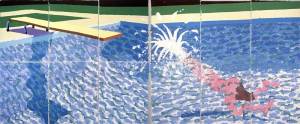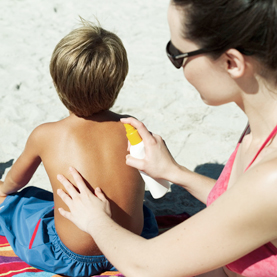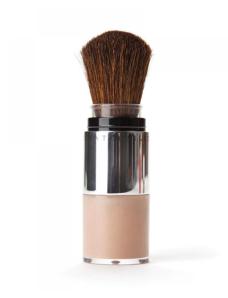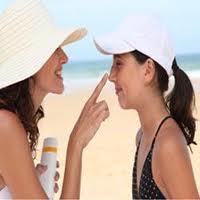
A few weeks ago as a patient was leaving our office she turned to tell me and the doctor I work for that Dr. Oz had recommended on his TV show that you go outside without sunscreen on for 15 minutes in order to get enough Vitamin D. Both the doctor I work for and myself told her that we did not agree with Dr. Oz’s recommendation. We explained that by going outside, even for 15 minutes, without sunscreen you still get too much sun exposure and expose yourself to the risk of skin cancer. The stakes were simply too high to follow that recommendation. If you aren’t getting enough Vitamin D take a supplement instead of going out into the sun unprotected.
Of course being the sunscreen fanatic that I am along with the fact that I see it as a personal responsibility to warn people about the dangers of skin cancer, I was very upset after hearing that Dr. Oz had made that comment on TV to millions of viewers. I can tell you that many women take Dr. Oz’s medical advice extremely seriously and want to follow it to a T. So I did a little online research and found the reference our patient had mentioned:
If these foods don’t sound very appealing to you, there is good news: you don’t have to eat vitamin D to make sure you’re getting your daily dose! Vitamin D is actually produced in your body when ultraviolet rays from sunlight strike your skin. The UV rays trigger synthesis of vitamin D, which then gets converted in your liver into its active form.
This means one of the best ways to get vitamin D is to spend about 10-15 minutes a day outside in the sun. Keep in mind that wearing sunscreen will prevent you from getting adequate vitamin D outdoors. In the summertime, an easy solution is skipping sunscreen on your legs for the first 15 minutes in the sun. Just make sure you apply in time to prevent any burns or damage.
If this sounds complicated (or it’s cloudy!), there’s an even easier way to get your vitamin D: many foods in the American diet are fortified with this essential nutrient. In fact, fortified foods provide the majority of vitamin D in our diets.
(From Daily Dose: Vitamin D – The Dr. Oz Show website)
I am not here to quibble about the fact that you can get all the Vitamin D that your body needs from the sun, what I am going to argue against is Dr. Oz’s advice. Let’s be very realistic here – you’ve thought about it and today you notice it is sunny outside so you think “I’ll be out and about running errands, I won’t put sunscreen on for the first 15 minutes I am out”. Now how many people do you know who will stop during their busy day and put on sunscreen?? I don’t know any. People drastically underestimate the amount of damage intermittent sun exposure does to their skin. Put your sunscreen on everyday before you leave the house. If you are inside during the day and then leave to go out while it is still sunny put more sunscreen on all your exposed skin. A tan may look sexy now but wrinkles and dark spots are not sexy later on. And remember – a tan is a sign of damage to your skin no matter how fabulous you think you look right now. One of the most common complaints any esthetician hears is about sun damage. It is very hard to treat hyperpigmentation (one way you can gauge how hard it is to treat a specific skin issue is by the number of products on the market sold to treat it. There is no perfect solution for hyperpigmentation hence the vast proliferation of products to erase it). I found this comment about Vitamin D and sun exposure to be just another example of how well-meaning advice will be improperly followed and interpreted out in the real world.
Another case in point – terror over the safety of sunscreens. The EWG has made numerous headlines over their claims that sunscreens are more harmful than helpful. As with many controversies the cold hard truth gets lost adminsts the hype. Renee Rouleau does a good job at explaining one controversial sunscreen ingredient in her blog post Does Sunscreen Cause Cancer?:
While the internet is an amazing resource for information, when a rumor gets out there, it spreads like crazy on the web and when people read it they may consider it to be factual.
One such skin care rumor that has swirled around on the internet for a while now is that octinoxate–the most common sunscreen ingredient in the world– causes cancer. Then the other day I was reading one of the handled bags from a recent Lululemon purchase and was shocked when I read the following printed on their bag: “Sunscreen absorbed into the skin might be worse than sunshine. Get the right amount of sunshine.” What? Did I really read this correctly on a Lululemon bag? Why is a fitness clothing company implying this claim on their cute bags that are given out in the stores? While I’m certainly okay with getting the right amount of sunshine as I do many of my own workouts outdoors, I am not okay with the comment implying that sunscreens may be worse than sunshine. This is wrong and misleading. Can we say melanoma–one of the deadliest forms of cancer??? There is so much scientific evidence that excessive sun exposure can increase your chances of skin cancer. (Read more about melanoma here.)…
So does sunscreen cause cancer? No. This is simply not true because there is no study at all that proves octinoxate causes cancer, and without a proven scientific study, this claim simply can be not accurate and true.
Some cosmetic brands that do not use this ingredient in their sunscreens will use scare tactics to get consumers to believe that their product is safe and others are harmful. This has been the case with parabens and I have spoken publicly about this here. Instead, they use the phrase “linked to cancer” to scare the public to buy their product, instead of “proven to cause cancer”– and there is a huge difference between the two.
In some studies where octinoxate is “linked” to cancer, the ingredient has been placed in high concentrations directly onto various types of cells taken from skin or other areas of the body (liver, uterus) or was fed to rats or mice in their food. One such study, conducted by researchers at the University of Zurich in Switzerland in 2004, found evidence of endocrine disruption activity in rats fed octinoxate but did not find a link to cancer.*1 Shortly after the 2004 study was published, another research group in Australia found detectable amounts of octinoxate in the stratum corneum and epidermis layers of the skin 24 hours after applying the ingredient to intact skin, but the amount found was 5 times less than studies where octinoxate was applied directly to human keratinocytes in a Petrie dish.
Bottom line: There is no evidence or information about octinoxate causing cancer. Trust me, if there were valid, published studies about octinoxate as a cause of cancer, we would all know about it.
The Skin Cancer Foundation has long refuted the EWG’s claims that sunscreen ingredients are dangerous and are doing more harm than good.
Recent attacks on sunscreens in the media point to imperfections and potential risks, but miss the point that sunscreen continues to be one of the safest and most effective sun protection methods available.
We are concerned that the criticisms will raise unnecessary fears and cause people to stop using sunscreen, doing their skin serious harm.
In general, the criticisms have not been based on hard science. In fact, The Chair of the Skin Cancer Foundation’s Photobiology Committee, an independent panel of top experts on sun damage and sun protection, reviewed the same studies cited in the media, and found that their determination of what made a sunscreen bad or good was based on “junk science.”
(If Recent Attacks on Sunscreen Concern You – The Skin Cancer Foundation)
In the same article The Skin Cancer Foundation goes on to refute different claims made against sunscreens such as:
• Retinyl Palmitate, a Form of Vitamin A and an Ingredient in 41 Percent of Sunscreens, Speeds up Growth of Tumors and Other Lesions When Exposed to the Sun.
An FDA study is often cited for this data, with some faulting the FDA for not releasing the study. However, the FDA is yet to release the study precisely because it has not gone through proper peer review. Thus, the criticisms are based on an unapproved 10-year-old study of mice that has never been published in any journal. To date, there is no scientific evidence that vitamin A is a carcinogen in humans. What’s more, only trace amounts of retinyl palmitate appear in sunscreens, and some evidence suggests that it is actually protective against cancer.
I think the lesson here is don’t believe everything you read or see on TV. You’re a smart person, right? Do some of your own research before just accepting what someone else has to say.
Further watching and reading (from my related posts):
Mary Cassatt painting Children Playing on the Beach image from wikipaintings.org











Recent Comments